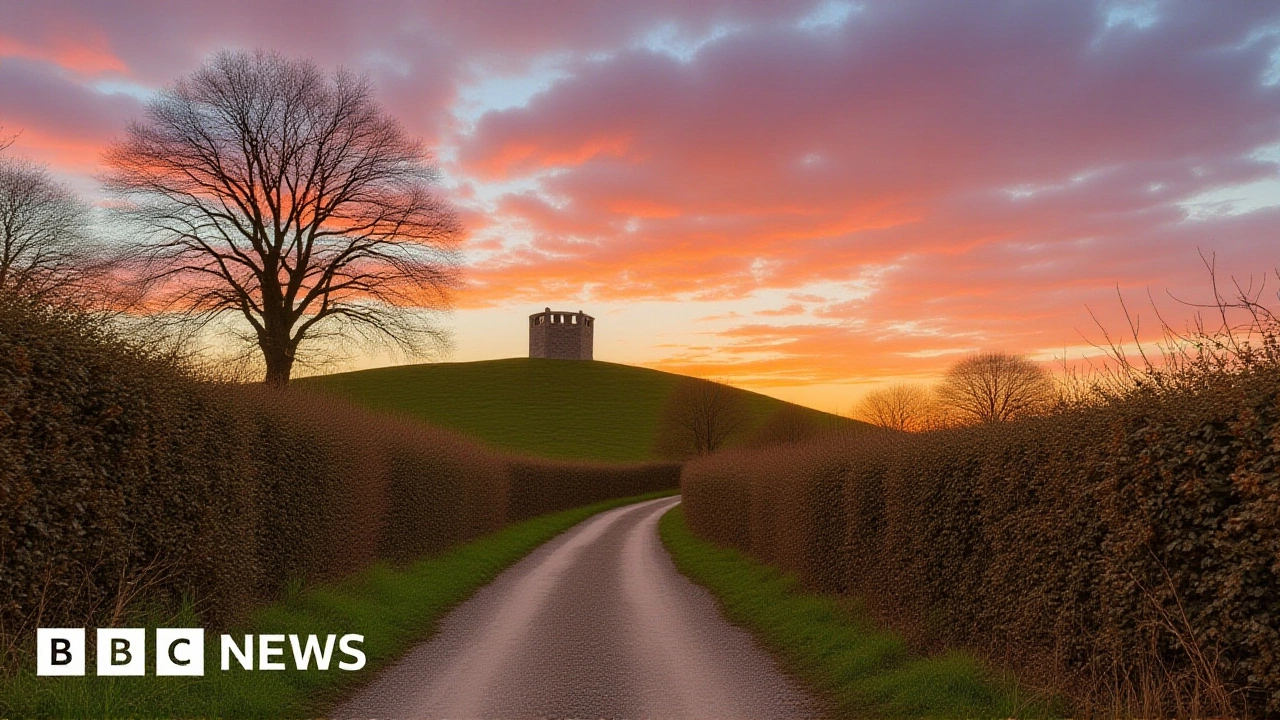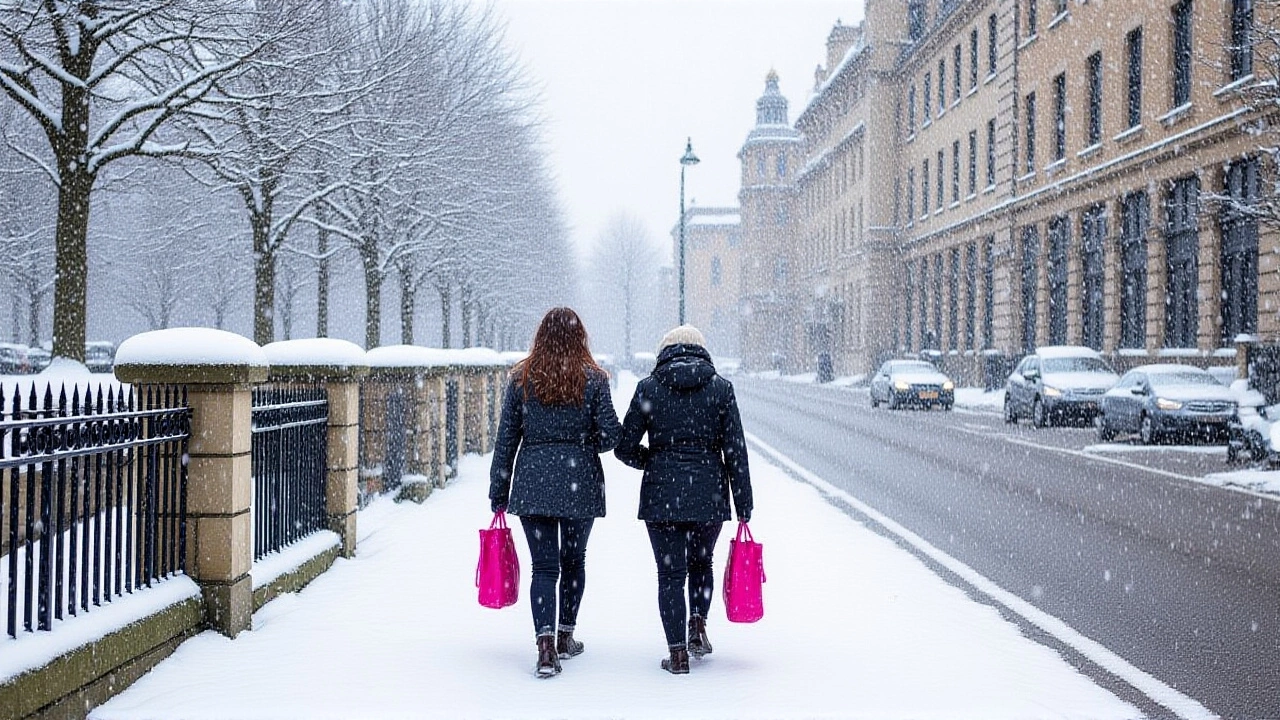On November 23, a sudden plunge of Arctic air triggered one of the earliest major snow events of the 2025 winter season across the United Kingdom, with 25 counties bracing for heavy snowfall, icy roads, and sub-freezing temperatures. The heaviest accumulations—up to 20 centimeters—were predicted for the Scottish Highlands and Aberdeenshire, according to detailed forecasts from WXCharts and MetDesk data. The storm hit hardest in the Central Belt of Scotland, where Edinburgh and Glasgow—home to over 1.3 million people—were plunged into whiteout conditions by midday. Residents woke to icy winds, slushy streets, and the unmistakable hush of falling snow. It wasn’t just a picturesque winter scene; it was a disruption waiting to happen.
Why this storm caught so many off guard
Typically, late November in the UK is still mottled with autumn leaves and damp chill—not snowdrifts. But this year, a deep Arctic high-pressure system stalled over Scandinavia, funneling frigid air southward with unusual force. What made this event stand out wasn’t just the timing—it was the precision of the models. WXCharts used color-coded thermal mapping to highlight purple zones where snowfall probability exceeded 85%, stretching from Inverness to Perth. Meanwhile, the Met Office, the UK’s official weather service, took a more cautious tone, warning only that “snow is possible in higher elevations.” Their extended forecast, covering November 24 to December 8, suggested the worst might be over—replacing snow with frost and fog. The twist? The models were right. The Met Office was right too. Sometimes, the truth lies in both.
The temperature divide: North vs. South
The UK’s weather didn’t just snow—it split. In the Scottish Highlands, temperatures dipped as low as -2°C. In Cumbria and the Pennines, it hovered just above freezing at 0–3°C. Meanwhile, in the South East of England, where commuters in Kent and Sussex still wore light jackets, temperatures climbed to a relatively balmy 4–7°C. That’s a 9-degree difference across a country smaller than Oregon. The contrast wasn’t just meteorological—it was cultural. In Scotland, school buses were delayed. In London, people posted photos of their first snowflake on Instagram. Both were experiencing the same weather system. Just not the same reality.
Who’s affected—and how
The Central Belt of Scotland bore the brunt. With major transport arteries like the M8 and A9 likely slick with ice, local councils rushed to deploy gritting fleets. Public transport operators in Glasgow and Edinburgh warned of delays, especially on rail lines crossing elevated terrain. In North Wales and North Yorkshire, schools in hillside villages began preparing for closures. Rural communities, where power lines snake through exposed moorland, faced the greatest risk of outages. One resident from near Fort William told a local radio station, “We’ve had snow before—but never this early, and never this thick. We’ve got the blankets ready. The generator’s charged. We’re not caught off guard this time.”

What the Met Office isn’t saying
The Met Office didn’t issue a formal amber or red weather warning for snowfall. That’s telling. Their conservative stance reflects a long-standing reluctance to over-predict winter weather in the UK—a pattern rooted in decades of false alarms. But this time, the models didn’t just suggest snow; they mapped it. With MetDesk data feeding into WXCharts, the resolution was sharper than ever. The Met Office’s extended forecast, however, paints a different picture: “Drier, calmer conditions” ahead, with “increased overnight frost and fog.” That means the real danger might not be the snow that fell on the 23rd—but the ice that forms after it melts and refreezes. And that’s when accidents spike.
What’s next? Frost, not snow
By November 25, the Arctic air had begun to retreat. Snowfall stopped. But the cold remained. The Met Office now expects temperatures to stay below freezing overnight across northern England and Scotland through December 8. Fog is expected to cling to river valleys in Wales and the Yorkshire Dales, reducing visibility on A-roads and motorways. This isn’t a blizzard—it’s a slow freeze. And that’s often more dangerous. Drivers forget to adjust. Pedestrians underestimate black ice. Emergency services, already stretched thin, are bracing for a rise in accidents and medical calls.

Historical context: Is this normal?
Early snowfalls aren’t unheard of in the UK. In 2010, the country saw its heaviest snow in 28 years by mid-November. In 2018, a storm dumped 15cm on parts of Scotland before Thanksgiving. But those were outliers. What makes this year unusual is the timing relative to climate trends. Average November temperatures in the Scottish Highlands have risen by 1.4°C since 1990, according to the Met Office’s own records. So why the deep freeze now? Scientists point to a weakening polar vortex—a phenomenon that lets Arctic air escape its usual confinement. It’s not proof of climate change, but it’s a symptom of its volatility. The takeaway? Don’t expect every November to be like this. But don’t assume it won’t happen again next year.
Frequently Asked Questions
How does this snow event compare to previous years?
This is among the earliest significant snowfalls since 2018, when parts of Scotland saw similar accumulations in late November. While the UK averages 10–20 snow days per year, most occur in December or January. A 20cm snowfall in the Highlands by November 23 is unusual but not unprecedented—only five such events have occurred in the past 30 years. What’s notable is the precision of the forecast, which outperformed historical models.
Why didn’t the Met Office issue a formal warning?
The Met Office reserves formal warnings for events with high certainty of widespread disruption. While WXCharts and MetDesk predicted heavy snow in localized areas, the Met Office deemed the coverage too narrow and the duration too short for an amber or red alert. Their conservative approach avoids public fatigue from false alarms, but critics argue it leaves some communities underprepared.
Which areas are still at risk after the snow stops?
Even after snow melts, overnight temperatures below freezing will create black ice on roads, pavements, and bridges—especially in the Scottish Highlands, Pennines, and North Wales. Fog will also reduce visibility in river valleys, increasing risks for drivers. The Met Office warns these conditions will persist through December 8.
Should residents in southern England prepare for snow too?
Unlikely. The South East of England is expected to remain above freezing, with rain instead of snow. However, colder air may still bring frosty mornings and icy patches on untreated roads. The real impact for southern residents will be travel delays from fog and wet conditions—not snow.
What should people do if they’re in the affected areas?
Keep an emergency kit in your car: blankets, a flashlight, non-perishable snacks, and a phone charger. Avoid unnecessary travel, especially on rural roads. If you must drive, reduce speed, increase following distance, and never use cruise control on icy surfaces. Check on elderly neighbors—many lack heating or mobility to clear snow. Local councils are gritting major routes, but side streets may take days.
Is this linked to climate change?
Not directly. Cold snaps like this are still part of natural variability. But scientists say a warming Arctic is weakening the polar vortex, making it more likely for cold air to spill southward unpredictably. So while this storm isn’t caused by climate change, it may become more frequent as the Arctic warms faster than the rest of the planet.

